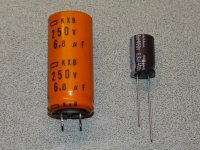Please don't take the following as gospel.
Some of the caps look "wrong". Replacement caps should be more or less same size. If the can size is noticeable smaller, then something is possibly off. I can spot C912, 47uf 200V right off the bat.
I'd be interested in what they put in C703, 6.8uf 250V, because it's something I had trouble finding a replacement for.
https://wiki.arcadeotaku.com/w/Nanao_MS-2930-S
Lower right in the cap map.
Actually, here it is. I found one in my pile of junk.

Left is what is in originally in this chassis, right is just something I had on hand. Capacitance matches, voltage is equal or higher. What's the problem? Left reads 0.2 ohms for equivalent series resistance (ESR), right reads 3.9 ohms. That's orders of magnitude greater. Higher ESR causes more ripple.
So if I replace it with the one on the right, how will that ripple manifest in this case? Possibly in no discernible way. However, I like to think the cap is low impedance for a reason.
Food for thought!




